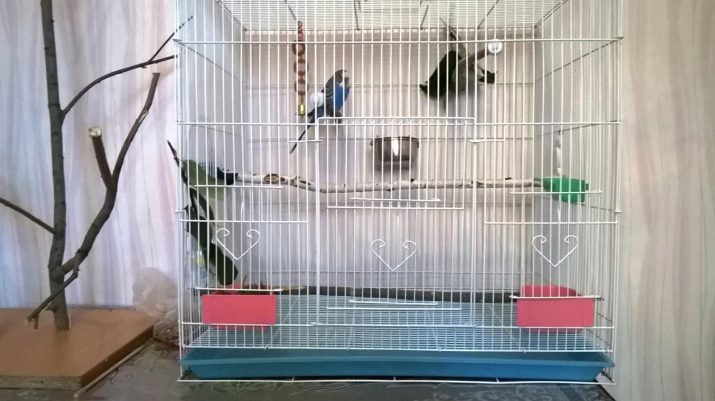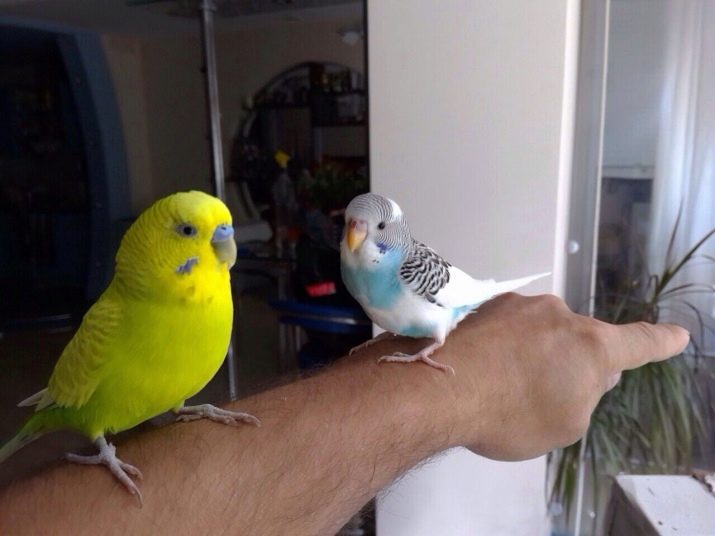When can a parrot be released from its cage after purchase?

Many lovers of domestic fauna have parrots. These peculiar beautiful birds with their own character have an extraordinary mind and a cheerful disposition, for which they become universal favorites of all household members. It is easy to look after them, they will not create problems in case of urgent departure - you can always quickly find someone who will temporarily look after the bird.
If you decide to have a parrot, prepare carefully for the purchase: study the recommendations of ornithologists on the conditions of keeping, the rules of care and hygiene, the feeding diet, the zoological characteristics of the selected breed. Then the new family member will begin to live in comfortable conditions, adapt relatively easily and will always be cheerful and healthy.

How to prepare for the "newcomer"
Before going to the pet store, purchase everything you need for the parrot in advance: a cage of the optimal size (not heavy), a feeder, a drinker, accessories for games (perches, ropes, ladders, mirrors, bells, etc.). All this must be thoroughly washed and disinfected before purchasing a bird.
Come up with a beautiful original nickname for the feathered one. Place the cage next to a wall so that there is no draft or direct sunlight. Move the indoor plants away so that the parrot cannot reach them and nibble, otherwise a very sad outcome cannot be avoided.


Adaptation period after purchase
Bird watchers note that the adaptation of a parrot is much easier if everything was prepared in advance, and did not appear in the house with the bird. The adaptation period lasts 2–3 weeks, and can last for a month.The birds are brought home in a transport cage. Carefully place the bird in the cage, provide food and water - this is enough for now. At first, the parrot will be sad and quietly sit on the perch. Leave him alone, do not try to make friends: while this is unlikely to work, but it will add stress.


It is advisable that in the first days someone entered the room with the cage alone, and let the rest of the household put off the acquaintance for later.
Calm down, just check the bird without any action. Let your pet take a little closer look at the cage and at you. Refrain from loud conversations for a while, do not turn on music, do not slam doors, do not let other pets into the room, if any.

If you notice that the feed does not decrease from the feeder, pour it directly onto the bottom of the cage, as the parrot may not see the feeder due to stress.... After a couple of days, the parrot will begin to come to its senses, see the grains and, out of hunger, will happily eat.
Parrots drink rarely and very little, and in a state of stress they can do without drinking for a whole day, so you may not notice if the bird is drinking. If it seemed to you that the parrot does not drink at all, then in order not to worry in vain, mark the water level on the drinker to see if the amount of water has decreased... You can put water in a saucer at the bottom of the cage - so the parrot will definitely see it and drink.

Liquid droppings due to stress during the first 2–3 days are normal, but if the diarrhea persists for a week, you will need to seek help from your veterinarian.
Approaching the cage, each time in a calm, even voice call the parrot by name, treat with a delicious treat, praise. The parrot will get used to you and will respond with funny sounds.
The need for regular flights
Free flights are a natural need for birds. The flight state forms positive emotions in parrots, they begin to play and frolic, utter enthusiastic sounds. The physiological state of the bird improves (general tone, blood circulation, digestion), and the wings are strengthened. Even in a spacious cage, a parrot can only spread its wings and shake itself, but not fly. If you neglect the recommendations of ornithologists and do not let the bird out of the cage, muscle atrophy, depression will develop, and a decrease in immunity will begin.

To avoid this, it is necessary to regularly allow the bird to fly freely around the room.
How to release a parrot for a walk for the first time
During the first time the bird is in your house, you cannot let it out of the cage, since a frightened bird will restlessly rush around the room and beat against walls and windows. The consequences can be dire. This will become possible after a period of adaptation (about a month). Watch closely for changes in your parrot's behavior.
If the pet is cheerful and cheerful, responds to his name, willingly has fun with toys, does not hide from you, sits on his finger and can eat from his hand, you can decide to "walk".

Prepare the room: close the windows (birds cannot see the glass and can break), remove mirrors and gadgets, safely hide the wires, take the animals to another room, close the door and warn the pets so that no one enters the room - the pet trusts only you for now.
Pick a moment when you have enough free time to take your time to deal with unforeseen situations. Both you and your pet should be in a good mood. The best time for a walk is in the late afternoon, before feeding. Quietly approach the cage, talk to the pet lovingly, say his name several times, open the door. It may happen that the parrot does not want to leave the cage. Do not rush him and do not shout, do not force him out, do not make sudden movements - parrots are very impressionable, unnecessary stress will not lead to anything good.

You can try to calmly lure the bird out of the cage with your favorite delicacy or a bright toy, quietly pronouncing its name and offering to eat from your hand.
If, despite your attempts, the parrot remains in the cage, leave it alone. Without closing the door, move away from the cage and calmly observe from the side. If the flight did not take place, then the bird is not ready and feels unprotected. Repeat the experiment after a couple of days. Every day the parrot will get used to the environment more and more and will definitely decide to leave his house. A mandatory rule is not to leave the bird unattended during the flight in order to protect it from accidental injury.

How to return a bird to its cage
It happens that, having decided to leave the cage, the bird does not want to return home, or has lost its orientation, carried away by freedom and an interesting environment. Show maximum patience - let the bird return to the cage on its own so that you do not have to force it, otherwise it will get stressed again and lose confidence in you. Use whatever was not fed before the walk. If the parrot flies and flies, not paying attention to the feeder, start pouring the seeds through the rods of the cage onto the pallet.
The bird will be attracted by the sound of blows, it will see food and enter the cage. Close the door quickly to prevent the bird from slipping out of the cage again.

You can use your favorite parrot delicacy, but it should be a delicacy from the bird's diet, and not from our table. Put your favorite food in the cage and in your palm, invite your pet to sit on your hand.
A tamed parrot will gladly feast on hand. Slowly, so as not to frighten off, move the feathered inside the cage and close the door. A hungry parrot will calmly continue eating from the trough.
Flight frequency and duration
Regular exercise is essential to keep birds healthy. Young parrots should fly around the room for at least 3 hours every day. For middle-aged birds, the load is gradually reduced to 2 hours, and older parrots can be released from the cage every other day. Do not allow parrots to fly for longer than the prescribed time and stay out of the cage overnight.

Frequent violations of the flight regime will finally knock the bird out of the rhythm of life, it will behave restlessly, chirp loudly, beat on the rods, demand freedom and will not be able to live in a cage.
It should be noted that for parrots of different breeds, different times pass from purchase to the first release from the cage. But there is one general rule - do not force events, gain patience and strength, wait for the full adaptation of the pet to the new habitat and confidential communication with the owner. This is the only way your pet will successfully learn interesting skills and make you a cheerful company for a pleasant pastime.
For information on how to release a parrot from a cage for the first time, see below.








